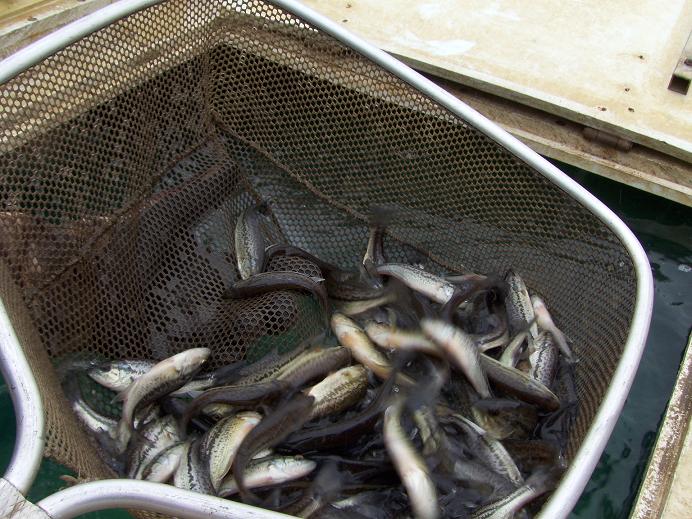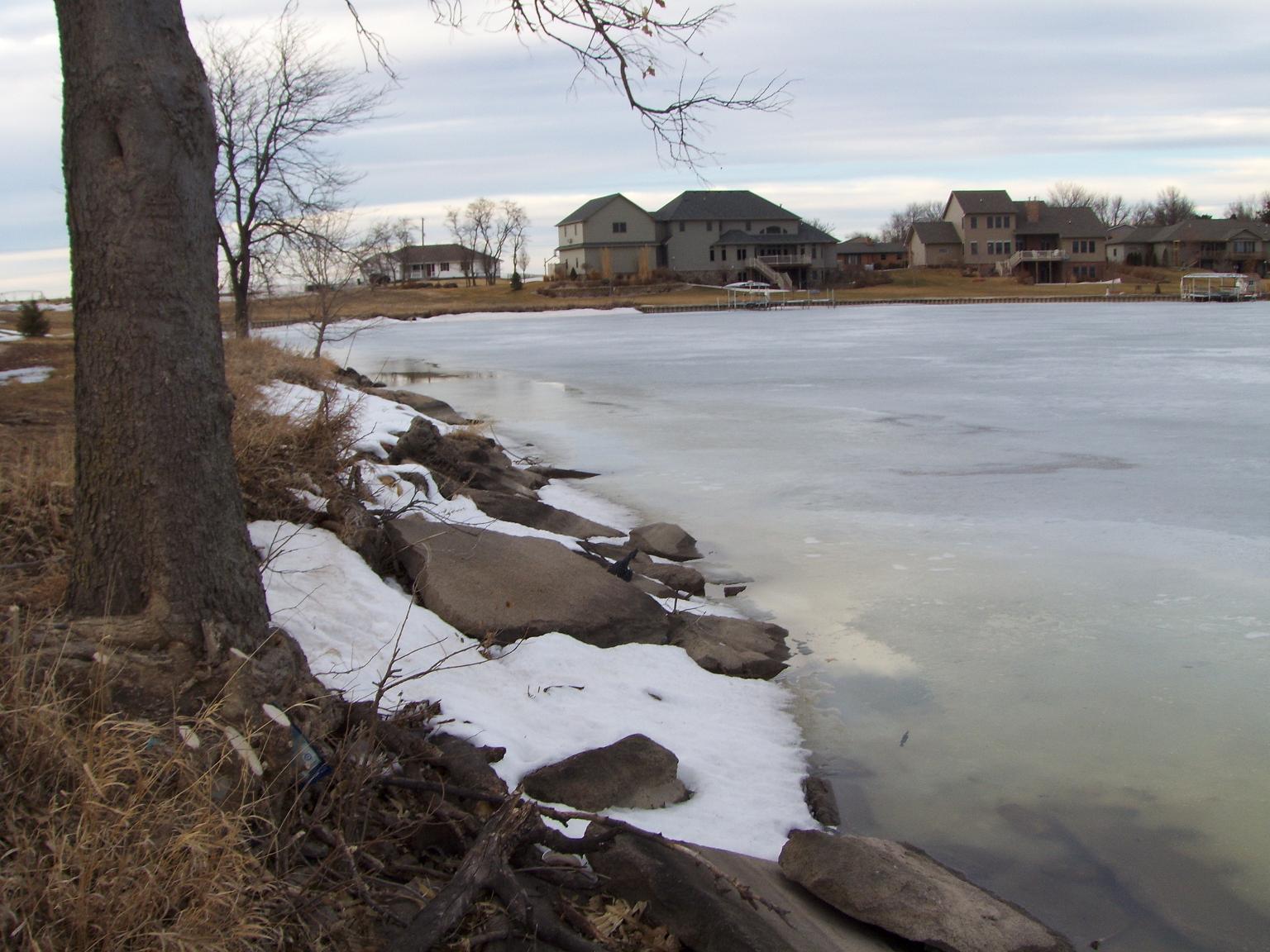Where can I find them for stocking? Been on the web for 3 weeks, still can't find any!
I'm not sure saugeye are any better than walleye (WE). Saugeye are a cross between the sauger and walleye. I do not recall reading any scientific literature that compares WE and saugeye survival advantages in various 'poorer' water quality situations. Saugeye are promoted and 'bragged up' by some states, but I have not seen significant benefits of them compared to WE. I have saugeye in my perch dominated pond. Another 1 ac pond near me has both WE and saugeye; but stocked at different numbers, although both fish species are growing at basically the same rate, utilizing the ample forage of YP (yellow perch) & 4 species of minnow/shiner.
Saugeye are basically only produced by state DNR's with 'healthy' budgets. Walleye and saugeye are pretty tolerent of a wide variety of water conditions. Resident WE populations live in our local muddy, warm (to 90F), Maumee River in NW Ohio. Sauger and WE live together in the often muddy upper Ohio Rv. WE live in numerous midwest US murky or silt laden reservors that drain predominately agricultural watersheds. If Ewest sees this, he may be able to do a literature search to see if saugeye tolerate lower DO and poorer water quality compared WE, which would be a benefit of Saugeye. As I mentioned I do not recall ever seeing any scientific proof of this.
Do you have strong reasons using saugeye instead of walleye? My experience is, given the same numbers in a BOW, WE are a little easier to catch than saugeye. I will call my WE/saugeye contact and get some specific numbers of angler catch ratios of WE vs saugeye (same age, but different stocking numbers) in the same pond (see post below for this info). If you search digilently and ask all the WE growers you contact, you might get lucky and locate a private fish hatchery that is going to try and produce them this spring. Not sure why a private grower would produce them because it requires two separate brood stock species that are ripe at the same time, often extra travel, and sometimes lower hybrid fingerling survival. This takes quite a bit more effort than producing pure WE and probably not any more profitable than selling WE fingerlings for a private producer. About only ones that can 'afford' all that extra time and effort are states with the taxpayer and license fees as source money.
Welder- May I suggest that you go back into your original post and change the title to Saugeye Searching or Locating Saugeye to help those members searching for subjects, topics and titles. I can do this for you, but I did not want to modify your post without permission.
Yes please change that,Thank You. I am looking for a game fish for a public lake here in Hastings, Nebraska that would thin out the over populated bluegill and shad. The water is just slightly murky and runs 6 to 8 foot deep in the places that I know of, have not been all over the 63 acre lake. Private citizens would like to stock it, have checked with the Game and Parks and they suggest saugeye.
Welcome to Pond Boss from a fellow Nebraskan! I am very surprised the G & P suuggested saugeye. And then they didn't give you a source? Weird.
But Brad Newcomb did say good luck after he told me this,LOL
Knowing a little more background, why add the 'government popularized in vogue' saugeye (SE) instead of the standard, dependable largemouth bass (LMB)? Lets do a little comparison; others are welcome to 'chime in'.
1. LMB will reliably reproduce and add numerous new predators which your lake apparently needs. Extra predators will also benefit anglers. SE very rarely reproduce naturally in lakes; SE are not a sterile hybrid. SE have the ability to dilute the gene pool of WE when the two cross naturally which is a big negative for combining them in navigatable waters with WE.
2. Price will be a little cheaper for LMB vs SE.
3. LMB will be more readily available vs SE.
4. LMB will be available in larger sizes to help them avoid being eaten by other predators thus survival will be better - more bang for your buck. IMO it seems Government employees often seem not to concerned with this feature which often reflects their advice. Supplimental stocking LMB should usually be done with sizes of 6"-10" to improve survival rates.
5. IMO, LMB are a much more aggressive and better shallow water predator to reduce your overabundant prey fish populations; esp bluegill.
6. LMB have a bigger mouth compared to same length of SE. This allows them to eat a wider size range of forage fishes that includes larger forage fishes.
7. LMB are more likely to be an open water predator vs SE to better thin out the shad numbers. Shad are primarily a pelagic or open-water oriented fish. SE tend to be a bottom oriented and more sedentary species than the LMB, thus not foraging heavily on fish living high in the water column. LMB are noted to be opportunistic and will readily resort to feeding in open water to use the shad as food.
8. SE are not 'famous' for feeding on bluegill (BG) whereas LMB can thrive on BG.
9. IMO LMB are much easier to catch than SE, thus making them a more popular and successful fish for anglers. Although LMB may not be as good eating fish as SE, but taste is not your main goal for the overpopulation problem in 'your' lake.
IMO a better species than SE to help rid the lake of shad is to introduce hybrid stripped bass (HSB). The HSB have a relatively small mouth but they compensate for this by having a huge appetite for smaller fish, thus they have the potential to eat lots of small shad. Both species prefer to live in open water which makes HSB a good choice as predator for shad overabundance 'problems'. Larger sized HSB (6"-8") are MUCH easier to locate than SE. Survival rate of supplimentally stocked predators is always better when larger sizes are used. Idealistically the better predators for your situation are LMB and HSB. These two species have proven very compatable in several research studies.
I think one of the main problems causing the over population of BG and shad in Hastings Lake is the overharvest of LMB. If there was a slot limit or a size limit was imposed the overpopulation of small fish would be less of a problem. Public lakes often suffer from over harvest of predators. IMO probably too many predators are harvested compared to panfish and shad. More catch and release of bass on this lake would result in a more balanced fishery.
My source that has WE and SE stocked at a ratio of 1SE:4WE says he usually catches 1SE per every 5WE; only a slightly better catch rate for WE compared to SE.
I believe Bill hit another homerun !!
Not much for anyone to chime in on.
Bill said "IMO, LMB are a much more aggressive and better shallow water predator to reduce your overabundant prey fish populations; esp bluegill."
I agree and would guess by a large factor - between 4 and 10 X in that situation.
Bill said "IMO a better species than SE to help rid the lake of shad is to introduce hybrid stripped bass (HSB). The HSB have a relatively small mouth but they compensate for this by having a huge appetite for smaller fish, thus they have the potential to eat lots of small shad."
I agree and would also point out that HSB are also an effective predator on small BG and shad during cool water periods when BG and shad metabolism is slower.
Only 2 small points to add.
1. SE being a coolwater fish can function better (more likely to approach their potential) in lower water temps than LMB. However SE at their max potential may not be as good a tool as LMB at less than their potential given the situation. Not sure that has any bearing in Neb.
2.Assuming you are talking about GShad (too cold for TShad) then LMB are a many fold better predator on GShad due to gape size advantage over SE or WE. GShad get big fast - often too big for SE and WE to be effective. Big LMB can do the job most of the time. As Bill notes bigger LMB may be in low #s due to fishing.
3 of 58 . Bill check your email. Keep in mind what these were written for readers. Not sure these answer any applicable questions but are for info only.
Survival, Growth, and Food Habits of Walleye X Sauger Hybrids (Saugeye) in Ponds
WILLIAM E. LYNCH JR and DAVID L. JOHNSON
School of Natural Resources, Division of Fisheries and Wildlife Management, The Ohio State University, Columbus, Ohio 43210
SCOTT A. SCHELL
Ohio Department of Natural Resources, Division of Wildlife, 360 E. State Street, Athens, Ohio 45701
Abstract
The saugeye (F1 hybrid of female walleye [Stizostedion vitreum] X male sauger [Stizostedion canadense]) was evaluated in Ohio ponds (0.29-0.37 hectares) for 3 years. Saugeye were stocked (mean total length = 34 mm) on 30 May 1979. First-summer survival estimates ranged from 0 to 81%. The lack of survivors in two of the four ponds was attributed to predation by largemouth bass (Micropterus salmoides) and green sunfish (Lepomis cyanellus). Growth in two ponds was good (mean total length = 195 mm and 214 mm) despite the presence of dense aqaatic macrophytes. Mean total length at the end of the second year varied little (approximately 284 mm) and growth was slow due to low abundance of prey. Mean total lengths at the end of the third summer were 351 mm and 400 mm in two ponds. Minimum survival rates from July 1980 to November 1981 in two ponds were 57 aud 24%. Saugeye were exclusively piscivorous and ate fathead minnows (Pimephales promelas), golden shiners (Notemigonus crysoleucus), bluegill (Lepomis macrochirus), and green sunfish. Our results indicated that saugeye readily adapt to pond environments and show promise as a large percid for small impoundments.
Habitat Preferences, Survival, Growth, Foods, and Harvests of Walleyes and Walleye × Sanger Hybrids
BARRY L. JOHNSON, DAVID L. SMITH, and ROBERT F. CARLINE
Ohio Cooperative Fishery Research Unit,3The Ohio State University, Columbus, Ohio 43210, USA
Abstract
We compared habitat preferences, survival, growth, foods, and harvests of stocked walleyes Stizostedion vitreum and walleye ♀ × sauger S. canadense ♂ hybrids in Pleasant Hill Reservoir, Ohio. Both fishes were stocked at similar rates and sizes (about 40 mm mean total length) in late May or early June 1979–1982. Neither group showed consistently better survival. Growth was similar until age 2. Thereafter, hybrids grew faster than walleyes. Age-0 walleyes occurred mostly over fine substrates in early summer and coarse substrates by fall. Habitat selection by age-0 hybrids was similar to that of walleyes, except hybrids preferred finer substrates in fall. Older hybrids and walleyes moved offshore at temperatures above 22°C. Diets of both fishes were similar, but hybrids ate more littoral fishes, whereas walleyes ate more pelagic fishes. Age-1 and older hybrids and walleyes ate mostly invertebrates in spring. Age-0 gizzard shad Dorosoma cepedianum were the most important prey for all ages of both groups. Hybrids and walleyes were caught by anglers in proportion to their abundances and contributed most to the fishery at ages 1 and 2. Hybrids have the potential to breed with either parent species and may introduce new genetic material into existing walleye or sauger populations. Data from our study and other Ohio waters show that hybrids can support important fisheries, particularly in tailwaters, and may be more successful than walleyes in impoundments with short water-retention times.
Development and Evaluation of
a Bioenergetics Model for Saugeye
RICHARD D. ZWEIFEL*
Ohio Department of Natural Resources, Division of Wildlife, Inland Fisheries Research Unit,
10517 Canal Road, Hebron, Ohio 43025, USA
ANDREW M. GASCHO LANDIS
1
The Ohio State University, Department of Evolution, Ecology, and Organismal Biology,
Aquatic Ecology Laboratory, 1314 Kinnear Road, Columbus, Ohio 43212, USA
R. SCOTT HALE
Ohio Department of Natural Resources, Division of Wildlife, 2045 Morse Road, Columbus, Ohio 43229, USA
ROY A. STEIN
The Ohio State University, Department of Evolution, Ecology, and Organismal Biology,
Aquatic Ecology Laboratory, 1314 Kinnear Road, Columbus, Ohio 43212, USA
Abstract.—We parameterized and evaluated a bioenergetics model for saugeye (walleye Sander vitreus 3
sauger S. canadensis) by using laboratory experiments in an effort to improve predictions of prey
consumption. First, we measured daily prey consumption rate and growth of age-0 and age-1 saugeyes fed
two daily rations (ad libitum and 50% of maximum) at five temperatures ranging from 108C to 288C.
Additional experiments quantified routine respiration rates and waste losses for three ages of saugeye (ages 0,
1, and 2) at five temperatures ranging from 108C to 288C. Mean daily rates of prey consumption (g _ g_1 _ d_1)
by saugeyes increased from 108C to 258C, declining at 288C. Respiration rates (g O2
_ g_1 _ d_1) increased over
the entire range of water temperatures. Waste losses were minor for saugeyes as egestion averaged 3.5% of
consumed energy and energy lost via excretion was 4.5% of assimilated energy. We evaluated the accuracy of
bioenergetics model predictions of saugeye prey consumption using daily prey consumption and
corresponding growth data from our first set of experiments. Model estimates of prey consumption rates
(g _ g_1 _ d_1) closely followed observed trends, providing reasonable estimates of cumulative prey
consumption across temperature and fish size. The saugeye model provided improved estimates of
consumption compared with a model published for walleyes (Kitchell et al. 1977), especially when water
temperatures were in excess of 258C. The differences we observed in predictive performance between the two
models resulted from higher thermal optima for saugeyes compared with walleyes, and waste constants for
saugeyes were two to three times lower than those calculated from the walleye model. These differences may
largely be responsible for the walleye model’s overestimation of consumption. Saugeye thermal optima are
warmer than those of either parent species, and saugeye is better suited for warm, productive midwestern U.S.
reservoirs. The saugeye model developed herein will improve the ability of managers to more accurately
predict the consumptive demand of in situ saugeye populations and better tailor stocking rates to match
available prey biomass.
Thanks very much to all of you
I think Bill's point that the predator fish on that lake are over harvested cannot be over stated. That is the #1 reason shad and sunfish get too numerous and stunt in public fishing lakes IMO.
The only advantage I would see for SE and WE over largemouth is the largemouth is more of a sight feeder vs. the other species and needs more light to feed. I've seen WE and Saugeyes in rivers that were so turbid I can't see how a bass would be able to see it's prey, hence one reason why those species were a dominant species in those rivers.
LMB are not ideal river fish. Cecil LMB can do very well in turbid water - plenty of it here - if its not brown like coffee its green like grass.
Yeah I agree ewest. I catch LMB here in water you cant see your lure past 8 inches. Fish are amazing how they can adapt to there surroundings. The big difference between LMB and WE IMO is how good they are. WE are gooooooood eating IMO one of the best fresh water fish to eat. Along with crappie!
I like WE and YP much better than LMB to eat.
Good discussions. WE, SE, and sauger are more adapted to life in moving water compared to LMB. Those adaptations are not just focused on visual or sight feeding abilities, but other ablities to live & thrive in moving water. Sauger have better abilities to live in moving water than WE. SMB are also well adapted to life in moving water thus they usually do better than LMB in stream conditions.
I stand corrected I guess but I've never seen largemouths do well in ponds up here that are constantly muddy.
Good discussions. WE, SE, and sauger are more adapted to life in moving water compared to LMB. Those adaptations are not just focused on visual or sight feeding abilities, but other ablities to live & thrive in moving water. Sauger have better abilities to live in moving water than WE. SMB are also well adapted to life in moving water thus they usually do better than LMB in stream conditions.
That explaines why I have only caught Sauger down here in the river! We have a big lake here called Greers Ferry that we can catch some really nice WE in if you know where to go, but I have never caught any SE in it, but there is no moving water in it either. I never thought of that. Good info Bill!!
I stand corrected I guess but I've never seen largemouths do well in ponds up here that are constantly muddy.
Hey Cecil maybe it's the type of bass?? The bass I catch in the muddy water is Florida strain not N. strain. Could that have something to do with it maybe? I am assuming your talking about N. LMB right?
I catch some fat LMB (both strains)from some soup like still water. Ponds like that need to be crammed full of forage for LMB to do well for long.
Hey Eric,
This small lake I am talking about (300 acres) is managed by the Game and Fish so I am sure you hit it head on when you say crammed full of forage. We catch some nice bass out it every year!
Well I E-mailed the Game and Parks about LMB. Have to wait and see what they say,didn't think I would have this hard of a time spending my own $$,LOL
Got the go ahead with Walleye and Lmb
Half LMB-Half Walleye? 6-8in on both,or should I stick with one type of fish?
Welder,
Some folks will tell you only 1 predator fish, but if your pond is 63 acres I am no expert but I think your ond could handle both for sure. Maybe an expert will chime in a say for sure. I would love to have both WE and LMB!
No doubt you can have more than 1 type of predator in 63 acres. The mgt of the types and numbers is the key.
Will be understocked for sure,But going to do what I can.
Hey Welder, are you going through Willow Lake Fish Hatchery? If not, give them a look. They are just a couple miles from Hastings and will be very helpful. I have dealt with them in the past, and will again when the time comes. Oh by the way, they do sell walleye along with the standard LMB, CC, BG, etc...
Thanks,that's one of the two I have talked to.
Given that this is Nebraska, I'm guessing that you have Gizzard Shad rather than Threadfin. GShad can occupy a lot of biomass without adding angling value, and their large adult sizes mean that they're difficult to control even with LMB.
Maybe you should consider suggesting a stocking of Musky or Tiger Musky? I know that the Illinois DNR uses Musky to control Gizzard Shad. 63 acres probably won't maintain a reproducing Musky population, but it would not require a lot of money to stock either. Just a thought.
I think they are Gshad,but never seen one out there over 3in. long.Will the winter kill larger shad,all ways see the small ones dead in the spring.
Proof from SD tha GShad overwinter and get too big for all but the very largest LMB to eat.
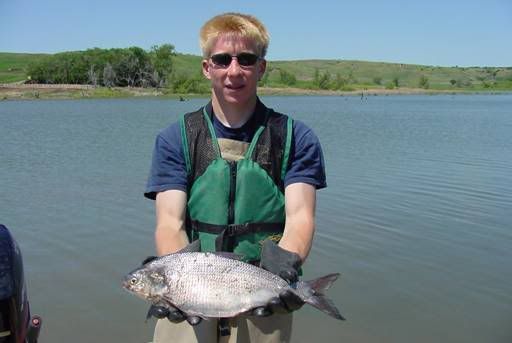
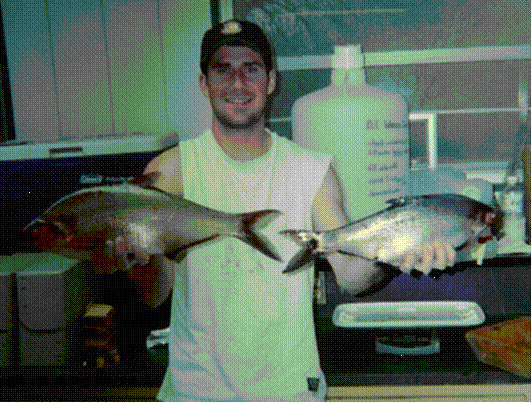
I would really like to see the LMB that could eat those sizes of Gshad. Small kids would be in danger with a bass around that size.

Bill, I think Dwight is trying to grow one of those kinds of largemouth bass. :-)
My guess is the LMB will need to be about 13 lbs to eat those.
Is this a good place for Walleye to spawn?
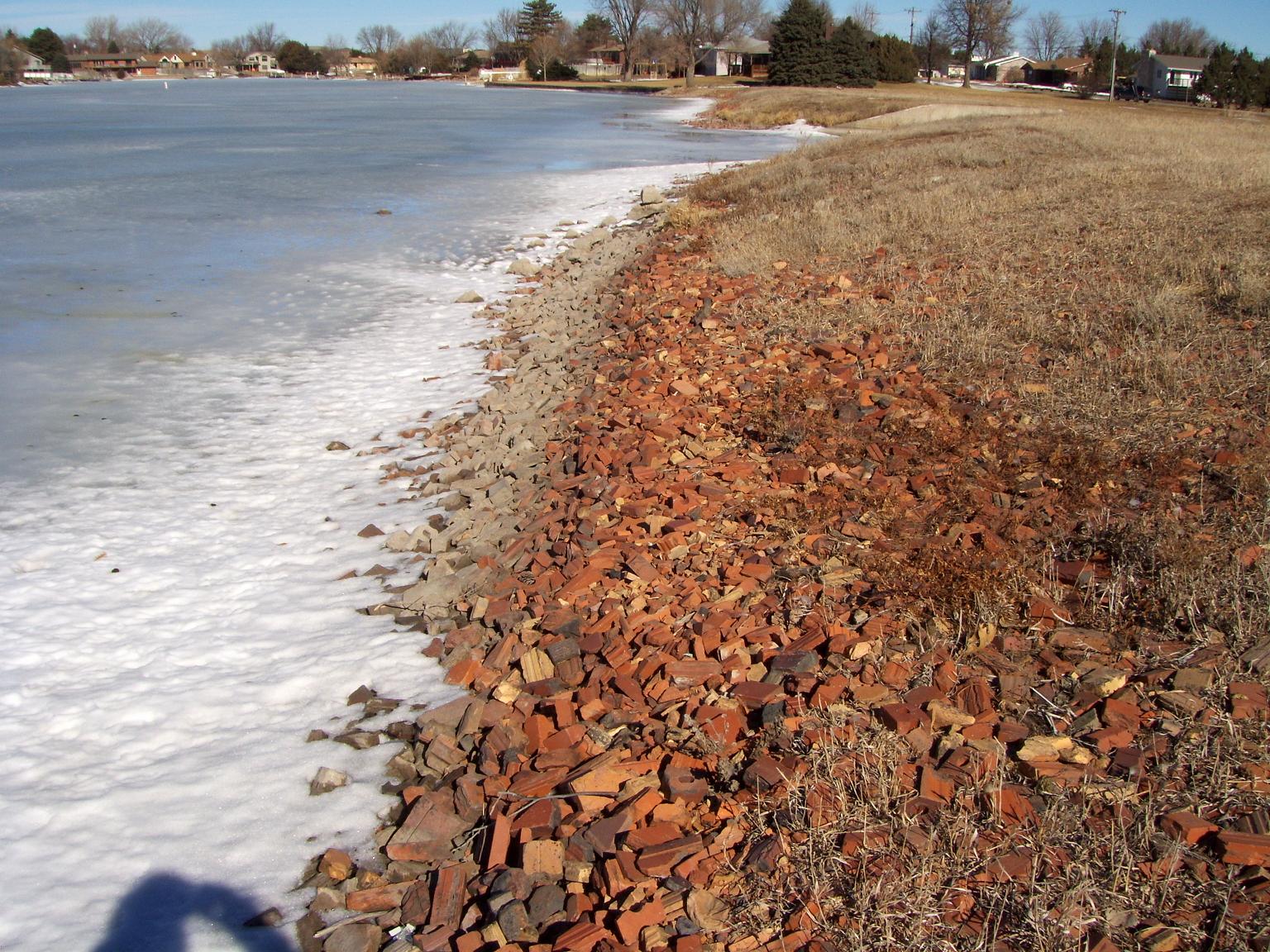
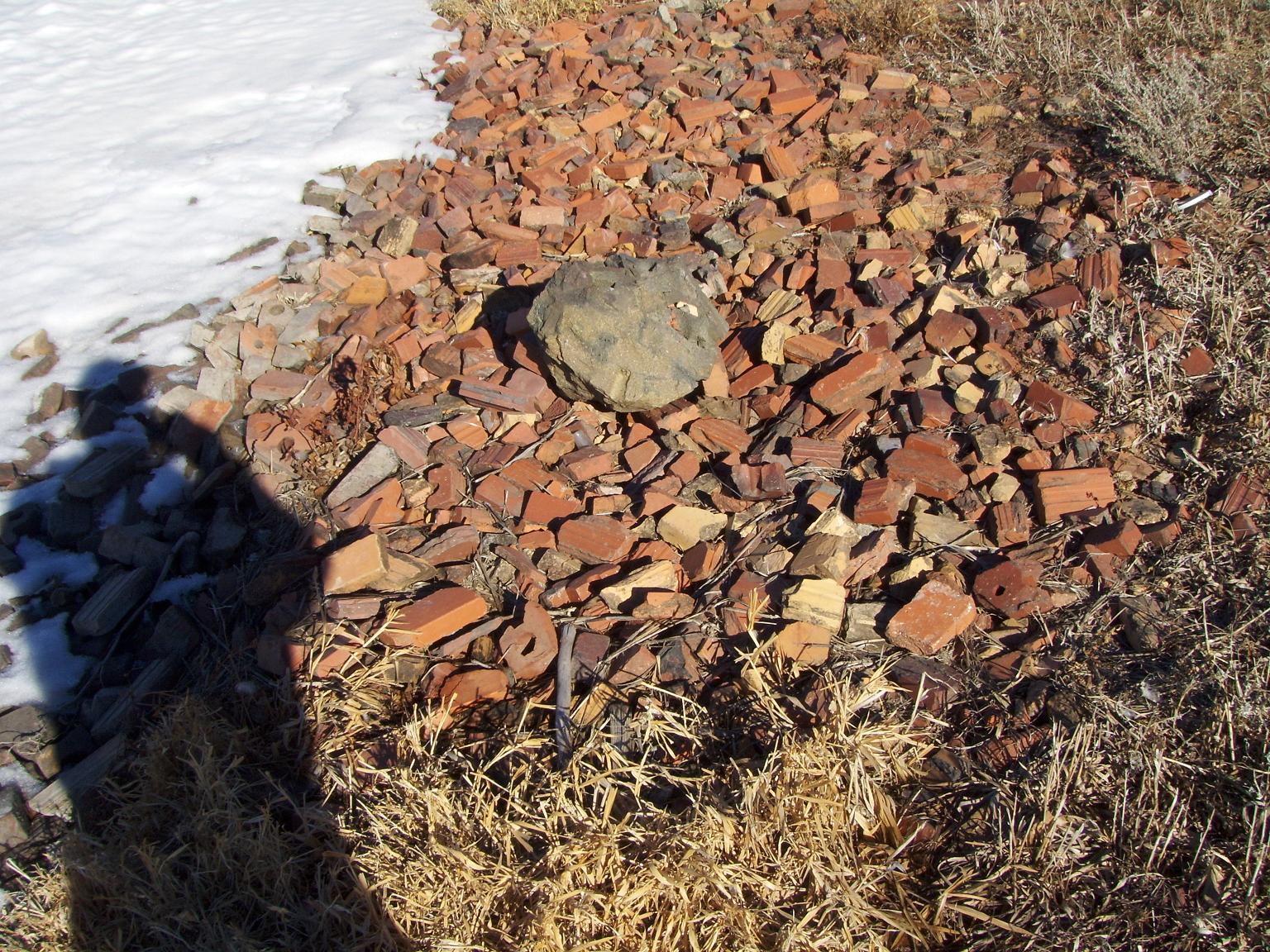
Is this good place for Walleye to spawn?
no, walleye need running water to spawn like a stream or river
Welder
I'm in Lincoln NE and just read your thread. Many lakes in NE are have a strong population of Gizzard Shad - Threadins find our winters too extreme, so what you are looking at is GS.
You have feedback from Eric West and Bill Cody and I recommend you take their expert advice to heart!
I understand your interest in WE but I feel you're rolling the dice thinking you have enough suitable spawning structure for them to maintain a population through reproduction. I fear it would be an expensive and disappointing experience.
As Bill and Eric suggest you should consider improving LMB spawning structure with PVC, tires, etc in the correct depths and stocking them would be your best bet for BG and GS control. They are readily available, cheap, and free in many scenarios and will reproduce and sustain their population.
I have a couple other suggestions for you off the radar a tad:
Wipers will hammer YOY GS and would add an exciting, tackle busting element to your fishery. They do well in NE extremes, are affordable and my favorite freshwater fish in terms of fighting ability. If you have LMB present in this BOW I would suggest growing out your fingerlilngs to at least 6, but preferrably 8"+ so they aren't an expensive snack for your LMB.
Blue Cats love shad - take them dead or alive and will actually hammer them on the surface like a Wiper [see this month's In Fisherman article]. BC are also easy to locate and are affordable. They are eating machines, but they would focus primarily on your GS and this would be accomplishing one of your goals [GS mangagement]. Within 5 years you could have fish up to 30lbs - and I'll bet your BOW could grow them in excess of 50.
If you ever want to chat or are in Lincoln feel free to PM or email me - we're not too far apart.
Walleye will spawn on rocky substrate when in a pinch. Our Nebraska reservoirs prove that every year when walleye move up to the dams to spawn in the spring and pull off major spawns. The wave action against the rocks keeps the water oxygenated enough and stirred up enough to keep the walleye eggs viable. Is that ideal spawning habitat? No. However, it is good enough, along with some stocking of fry, to sustain fishable populations in our state's reservoirs. In a lake such as Lake Hastings, you will need to continue stocking walleye to maintain fishable populations over time especially if there are large mouth bass and other predators in the lake. The fusiform shape of walleye make them easy to slurp up as prey when they are younger. They will do much better in large reservoirs than they will do in small ponds and lakes where predators more suited to those habitats are already established.
Even in NE reservoirs with good WE populations many of those STILL receive annual supplemental stockings to keep populations stable. If you had a smaller BOW and had limited number of anglers, I can see stocking WE and every few years supplementally stocking to serve as a put and take fishery. I just don't see this working in your scenario unless you have the fiscal means to stock periodically. Public lake also scares me - limited control over harvest.
Remember with walleye it isn't just finding a suitable spawning location. Their fry are highly vulnerable to predation and lack of zooplankton. So even if they did successfully spawn and the eggs survived long enough to hatch. You then have to hope there is enough zooplankton for them to feed on and that predators don't eat all the young fry. Same goes for their eggs, which are very vulnerable to predation as well, especially in marginal spawning areas.
Here are pics as requested.
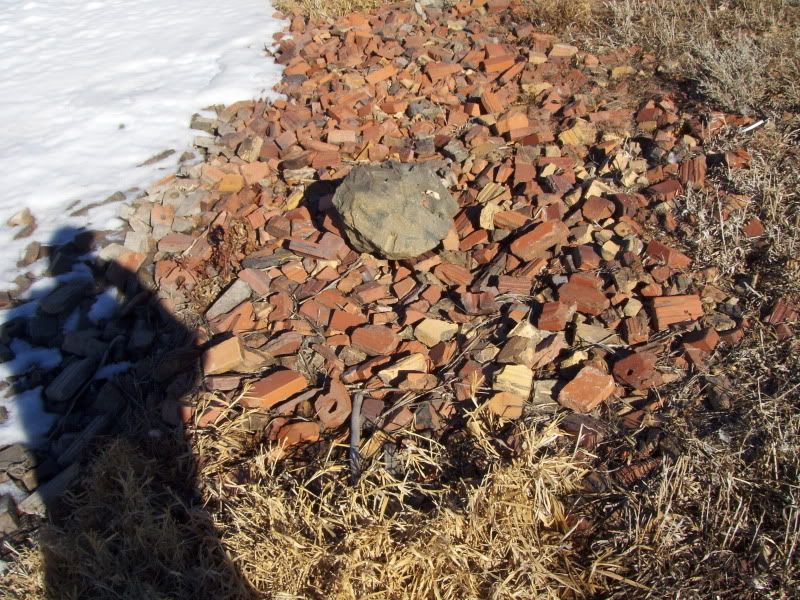

Walleye (WE) will also spawn and eggs hatch on windswept, rocky, cobble shorelines with water that has low turbidity. Low turbdity is important. Then conditions have to be good for adequate zooplankton and low predation of fry and fingerlings as mentioned by CJBS. The substrate in the pictures above is marginally acceptable for size. IMO the material is a little on the small side and not nearly expansive enough. Often 100's of feet are needed at a minimum to get enough egg accumulations to result in a minimal amount of egg survival and hatch. Then good or moderate wave action has to occur reguarly while not causing shallow water turbidity. At hatcheries WE eggs are hatched in bell jars where the eggs are continuously 'rolled' or tumbled whichgives some idea of what it needed to get the eggs to even hatch. This assumes the eggs don't develop fungus first. In my experience and readings, don't count or depend on any natural walleye recruitment in all but the exceptional conditions. If the fishery departments of many states with walleye fisheries can't get 'it done' on large bodies of waters they manage with lots of resources, how can the average pond owner expect to accomplish natural WE recruitment? Walleye are definately a 'finicky' or difficult fish to get natural recruitment. WE will readily spawn in many waters where they occur. The big problem is egg survival, successful hatch, and survival of fingerlings.
City wants to talk to me about the lake Monday, wish me luck, LOL.
Up date guess I will go with LMB,got the ok from state and city but no $$
Proof from SD tha GShad overwinter and get too big for all but the very largest LMB to eat.


Those would sure make some nice Flathead or Bluecat bait.
500 LMB went in March 5th.
